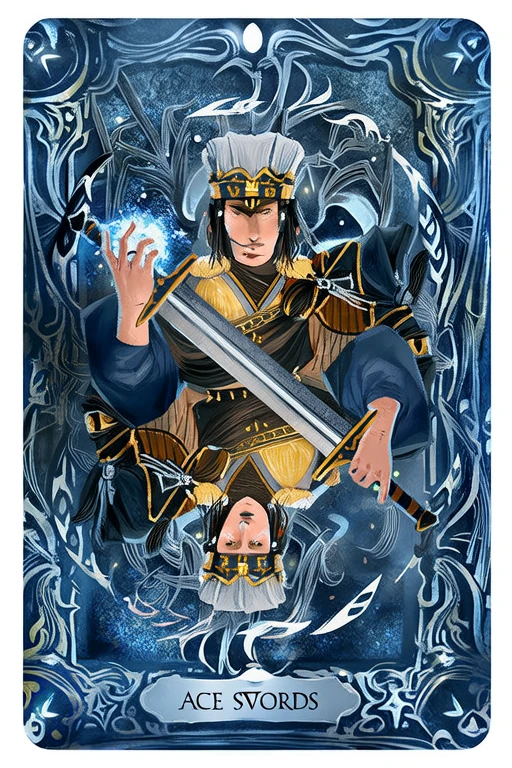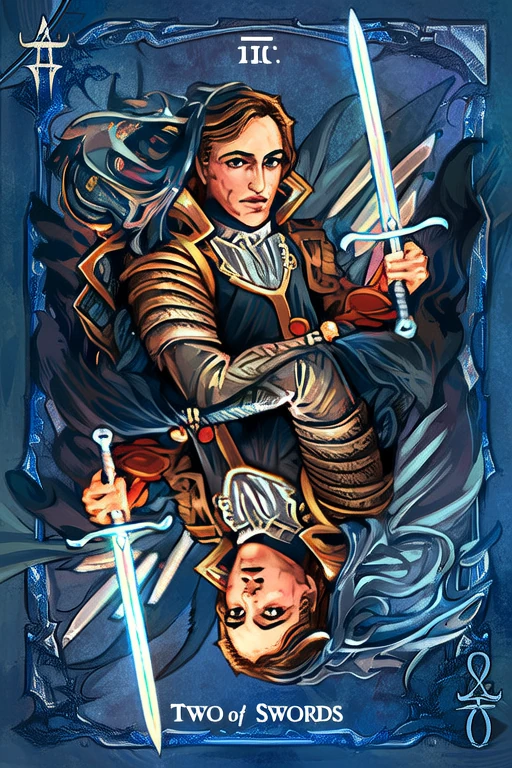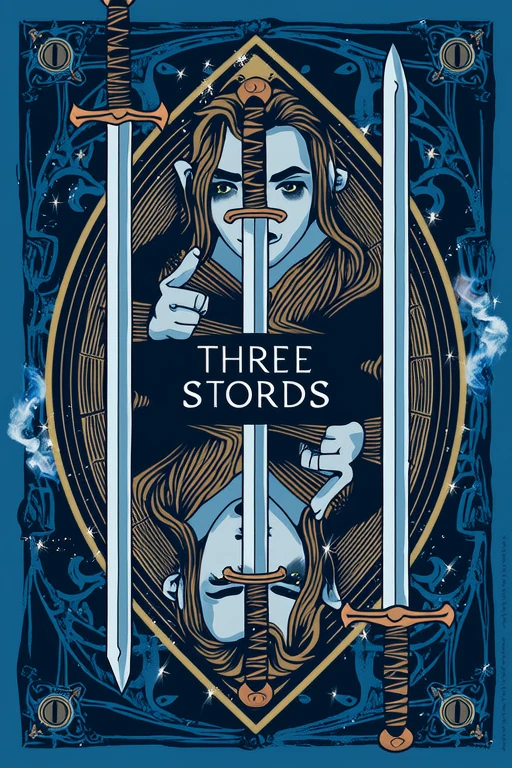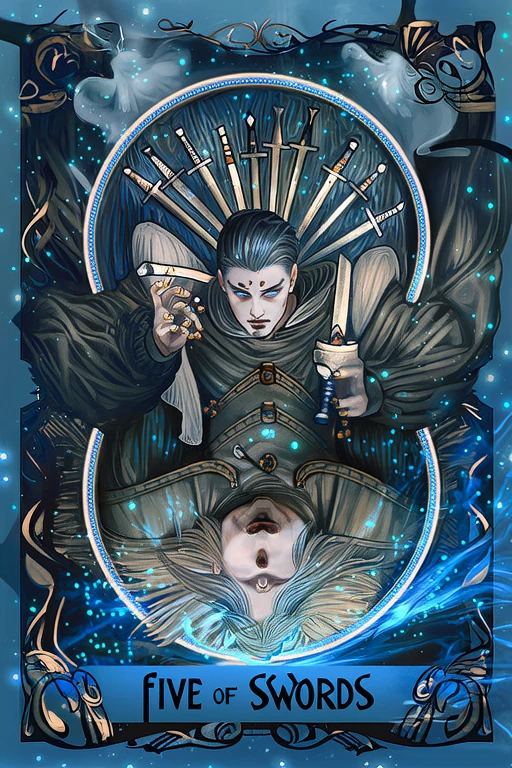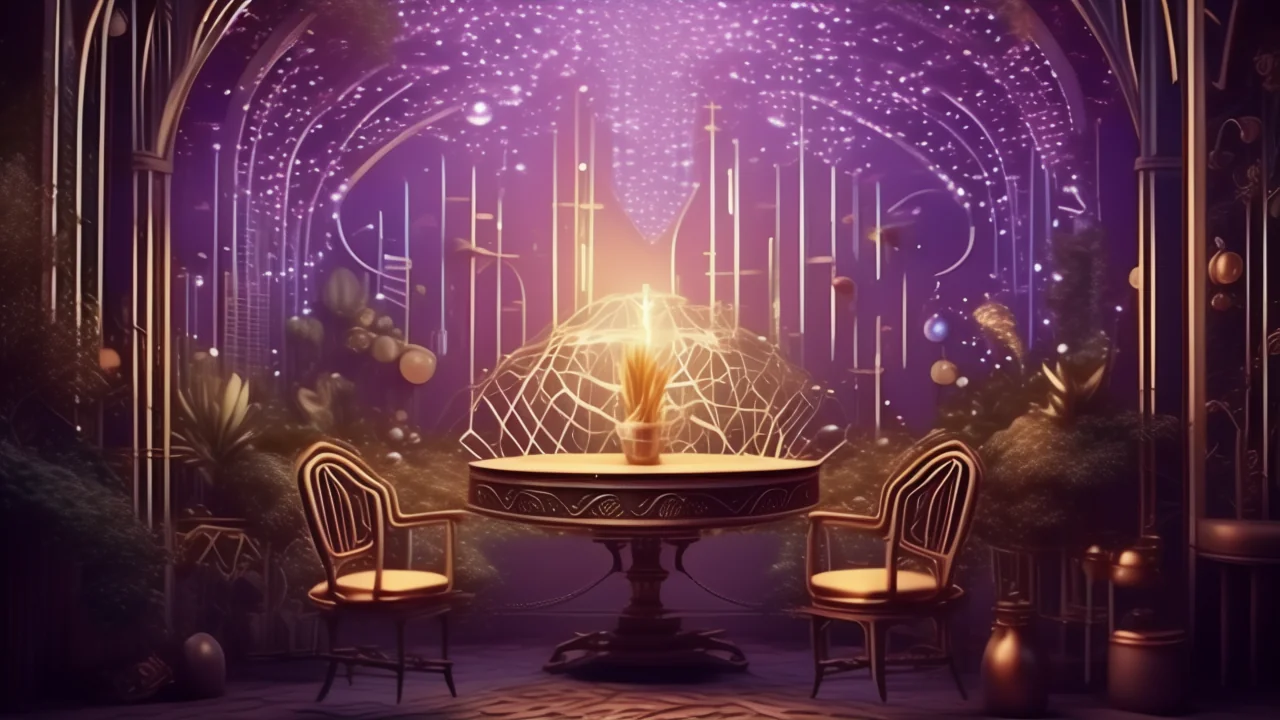
Four of Swords
Discover the deep meaning of Four of Swords with our free AI-powered tarot interpretation. Get instant, accurate readings based on advanced tarot knowledge.

Keywords
Upright Meaning
Rest, restoration, contemplation
Reversed Meaning
Exhaustion, burn-out, deep contemplation
Full Interpretation
The Four of Swords represents rest, restoration, and taking time to reflect.
In-Depth Analysis
📜 Historical Background
The Four of Swords, known as 'Four of Wands' in some older tarot decks, is part of the Minor Arcana in the tarot deck, specifically belonging to the suit of Swords. This card has its roots in the 15th-century Italian tarot tradition, where it was originally used in games before evolving into a tool for divination and spiritual insight during the 18th and 19th centuries. The earliest surviving tarot decks, such as the Visconti-Sforza and the Marseille Tarot, depict the Four of Swords with varying imagery, often showing a figure resting beneath a canopy of swords or lying in a state of repose with swords suspended above. This imagery has been interpreted as a symbol of peace after conflict, a theme that has remained consistent throughout its evolution.
In medieval Europe, the sword was a powerful emblem of intellect, authority, and divine justice. The number four, associated with stability and structure, when combined with the suit of Swords, suggests a period of mental rest or recovery after a challenging time. Some historians link the Four of Swords to the legend of the Holy Grail, where knights would undergo periods of contemplation and spiritual renewal after battles, reflecting the card’s themes of rest and reflection.
As tarot evolved through the Hermetic and occult revival of the 19th century, particularly with the influence of the Hermetic Order of the Golden Dawn and A.E. Waite’s Rider-Waite-Smith deck (1909), the symbolism of the Four of Swords became more standardized. Waite’s depiction shows a knight lying in a chapel with four swords hanging above him, suggesting a sacred space for healing and meditation. This image has become iconic in modern tarot, although other decks, such as the Thoth Tarot by Aleister Crowley, interpret the card differently, often emphasizing the mental stillness or even stagnation it may represent.
Across cultures, the Four of Swords carries different nuances. In Eastern interpretations, it may be seen as a call to mindfulness or inner harmony. In Western traditions, especially in the context of Jungian psychology, it represents the integration of the shadow self after intense mental struggle. Its presence in a reading often signals a need for rest, recovery, or strategic planning, making it a deeply symbolic and culturally rich card in the tarot tradition.
Symbolism & Imagery
The Four of Swords is rich in symbolic meaning, with each element of its imagery contributing to a deeper understanding of its essence. In the Rider-Waite-Smith tradition, the card typically depicts a knight lying in a meditative or resting pose within a chapel or sacred space, with four swords hanging above him. This setting suggests a place of spiritual reflection and inner peace. The knight’s posture—arms folded in prayer—implies a need for introspection, healing, or spiritual renewal after a period of mental or emotional strain.
The four swords themselves are a key symbol, representing the challenges, conflicts, or thoughts that may have recently been overcome. Their placement above the knight suggests that they are still present in the environment, but no longer actively engaged, indicating a temporary cessation of struggle. The stained-glass windows in the background often contain religious or symbolic imagery, reinforcing the idea of divine or cosmic support during this restful period.
Color symbolism also plays a role. The muted tones often used in this card—blues, grays, and soft whites—evoke a sense of calm, introspection, and spiritual clarity. These colors contrast with the more intense and dramatic hues of other Sword cards, highlighting the Four of Swords as a moment of respite rather than action.
Numerologically, the number four is associated with structure, stability, and foundation. In the suit of Swords, which governs the mind, communication, and intellectual pursuits, the Four of Swords can signify a need to consolidate one’s thoughts, take a mental break, or reassess a situation before moving forward.
When reversed, the Four of Swords may indicate a disruption in this period of rest—perhaps an inability to relax, premature return to action, or unresolved mental tension. It can also suggest that the querent is not allowing themselves the time they need to recover, or that their rest is being disturbed by lingering concerns.
Culturally, the card’s interpretation varies. In some traditions, it is seen as a call to retreat into silence and contemplation, akin to monastic practices. In others, it may represent strategic withdrawal or the importance of planning before reengaging in a challenge. In Jungian terms, it might symbolize the integration of the conscious and unconscious mind after a period of inner conflict.
The Four of Swords also has connections to other cards in the tarot. It follows the Three of Swords, which represents heartbreak or sorrow, suggesting that after emotional pain comes a time for healing. It precedes the Five of Swords, which indicates conflict or defeat, implying that the rest provided by the Four of Swords is necessary before entering a new phase of challenge. Thus, the Four of Swords serves as a pivotal point in the journey through the suit of Swords, emphasizing the importance of rest, reflection, and preparation.
Psychological Insights
From a psychological perspective, the Four of Swords resonates deeply with the concepts of rest, reflection, and mental recuperation. In the context of Carl Jung’s archetypal theory, this card aligns with the archetype of the Hermit or the Sage—figures who withdraw from the world to seek inner wisdom and clarity. It represents a necessary pause in the journey of the psyche, allowing for the integration of experiences and the restoration of mental energy. This pause is not a sign of weakness but a vital process for personal growth and resilience.
In modern life, the Four of Swords holds particular relevance in a world that often glorifies busyness and constant productivity. It serves as a reminder that rest is not only beneficial but essential. When this card appears in a reading, it may suggest that the querent needs to step back from external pressures and engage in self-care, whether through meditation, therapy, or simply taking time to be alone with one’s thoughts. It encourages the individual to assess their mental state and to recognize when they are pushing themselves too hard without allowing for recovery.
For personal growth and self-awareness, the Four of Swords offers an opportunity to reflect on recent challenges and to process emotions that may have been suppressed. It invites a deeper understanding of one’s internal landscape, promoting emotional intelligence and long-term psychological well-being. This card often appears during transitional periods, signaling the need to consolidate one’s energy before moving forward.
In therapeutic and counseling contexts, the Four of Swords can be a powerful tool for guiding clients toward self-compassion and mindfulness. Therapists and counselors may use this card to encourage clients to take breaks from stressful situations, engage in journaling or meditation, and explore the root causes of mental fatigue or burnout. It supports the idea that healing is not always about action, but sometimes about stillness and observation.
Modern spiritual practices also embrace the Four of Swords as a symbol of sacred rest and inner contemplation. Whether through yoga, silent retreats, or guided visualization, this card reminds practitioners that spiritual growth often requires periods of withdrawal and reflection. It underscores the importance of creating space for silence and stillness in one’s life to reconnect with the deeper self and the divine.
Correspondences
The Four of Swords is associated with the element of Air, reflecting its connection to the mind, intellect, and communication. In astrological terms, it corresponds to the planet Mercury, which governs thought processes, language, and analytical reasoning. This planetary influence suggests that the card encourages mental clarity, strategic thinking, and the need for intellectual rest before reengaging in decision-making.
Gemstones and crystals that resonate with the energy of the Four of Swords include clear quartz, which enhances mental clarity and spiritual insight; amethyst, known for its calming and protective properties; and selenite, which promotes peace and spiritual connection. These stones can be used during meditation or placed in a quiet space to support the rest and reflection this card signifies.
Herbs and essential oils associated with this card include lavender for relaxation and emotional balance, chamomile for soothing the mind, and frankincense for spiritual grounding and meditation. These natural elements can enhance the energy of stillness and introspection when working with the Four of Swords.
Seasonally, the card aligns with late autumn or early winter, a time of inward reflection and preparation for new beginnings. Temporally, it is often linked to the waning moon phase, symbolizing release, letting go, and internalization.
In terms of chakra energy, the Four of Swords primarily resonates with the Third Eye Chakra (Ajna), which governs intuition, insight, and higher perception. It may also connect with the Crown Chakra, supporting spiritual awareness and transcendence.
Numerologically, the number four is linked to stability, structure, and foundation. In the context of the Four of Swords, this suggests that rest and mental organization are necessary before moving forward with clarity and purpose.
❓ Frequently Asked Questions
The Four of Swords often raises questions in tarot readings due to its subtle yet profound energy. One of the most common inquiries is: 'Does the Four of Swords mean I should stop working or taking action?' The answer is not necessarily to stop altogether, but rather to pause and assess whether you are allowing yourself enough time to rest and regroup. This card encourages strategic inactivity rather than complete withdrawal.
Beginners sometimes misinterpret the Four of Swords as a negative or stagnant card. However, it is not a sign of failure but rather a reminder that rest is an essential part of any journey. Misconceptions often arise when the card is taken literally as a call to do nothing, when in reality it invites reflection, planning, and mental recovery.
Professional readers often use the Four of Swords in spreads related to mental health, decision-making, or burnout recovery. It works well in a three-card spread to show past, present, and future, where it may indicate a transition from struggle to rest before a new phase begins. In a Celtic Cross spread, its placement in the seventh position (the self) can suggest that the querent needs to take a step back to gain clarity.
When this card appears alongside other Swords, its meaning becomes more nuanced. Paired with the Two of Swords, it may suggest a need to resolve indecision through inner reflection. With the Five of Swords, it can indicate recovery after conflict. When drawn with Cups or Pentacles, it often advises balancing mental concerns with emotional or material stability.
Interpreting the Four of Swords in different contexts requires sensitivity to the querent’s situation. In career readings, it may advise taking a mental health day or stepping back from a stressful project. In relationships, it could suggest a need for space or time to process emotions. In spiritual contexts, it calls for meditation or retreat.
Ultimately, the Four of Swords serves as a gentle but firm reminder that rest is not only deserved—it is necessary for clarity, healing, and future success.
Practical Readings
Love Reading – Free • Online • AI • Instant • Accurate
In love, Four of Swords upright: Rest, restoration, contemplation. Reversed: Exhaustion, burn-out, deep contemplation.
Career Reading – Free • Online • AI • Instant • Accurate
For career, Four of Swords upright: Rest, restoration, contemplation. Reversed: Exhaustion, burn-out, deep contemplation.
Yes‑No Reading – Free • Online • AI • Instant • Accurate
As a quick yes‑no: upright tends toward “yes”, reversed leans “no”—interpret within your question’s context.
FAQ
What does Four of Swords mean in tarot?
Four of Swords represents rest, restoration, contemplation. This card encourages The Four of Swords represents rest, restoration, and taking time to reflect.
What is Four of Swords reversed meaning?
When Four of Swords appears reversed, it signifies exhaustion, burn-out, deep contemplation. Consider areas that may require adjustment or release.
Is Four of Swords a positive card?
Four of Swords is generally considered a neutral to positive card, representing rest, restoration, contemplation.
What should I do if I draw Four of Swords?
If you draw Four of Swords, focus on rest, restoration, contemplation. Align actions with the card’s upright energy.
How do I interpret Four of Swords in a love reading?
In love readings, Four of Swords suggests rest, restoration, contemplation in relationships. Consider how rest and restoration apply to your situation.
What does Four of Swords mean in a love reading?
In love, Four of Swords points to rest, restoration, contemplation when upright and exhaustion, burn-out, deep contemplation reversed. Reflect on relational balance & authenticity.
How is Four of Swords interpreted in career?
For career, Four of Swords upright highlights rest, restoration, contemplation while reversed warns of exhaustion, burn-out, deep contemplation—adjust planning & execution.
What is the financial meaning of Four of Swords?
Financially, Four of Swords suggests rest, restoration, contemplation potential; reversed indicates exhaustion, burn-out, deep contemplation—use prudent pacing.
Is Four of Swords a yes or no card?
Four of Swords is generally a context-dependent when upright; reversed leans toward hesitation or NO—apply to the nuance of your question.
References
References
- Encyclopaedia Britannica – Tarot
Historical overview and cultural context of tarot cards.
- Wikipedia – Tarot
General reference on tarot history, structure, and usage.
- Biddy Tarot – Tarot Card Meanings
Widely cited interpretations and learning resources.
- Labyrinthos – Tarot Card Meanings
Educational articles on major and minor arcana.
